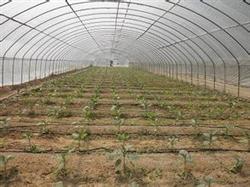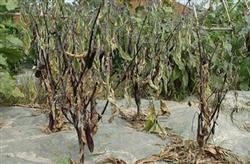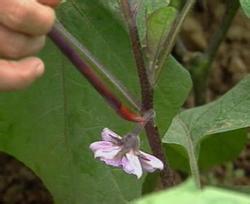What about the eggplant falling from the greenhouse

There are many reasons for eggplant falling flowers, such as excessive vegetative growth, weak plant growth, too dry or too high humidity, high temperature or lack of light. The prevention and control measures of vegetative growth are as follows: squatting seedlings at the right time, properly controlling water and fertilizer during the squatting stage, ploughing and loosening the soil, and timely spraying Chuhuawang No. 3 to return the exuberant essence of the top and shoot of the plant branches. turn to saturated supply of fruit reproductive development to transfer vegetative growth to reproductive growth in time. Prevention and control measures of weak plant growth: strong seedlings should be selected during planting, and fertilizers should be added at the same time to promote roots and seedlings. After transplanting, spraying new high-fat film can effectively prevent aboveground water from evaporation, seedling water from transpiration, isolation from diseases and insect pests, shorten slow seedling period, quickly adapt to the new environment and grow healthily. According to the plant growth, the management of flower thinning and fruit restriction was carried out. Prevention and control measures of lack of light: increase the time of light and the amount of light. The grass curtain should be uncovered early and late in sunny days to prolong the lighting time, and the curtain should also be opened to absorb scattered light on cloudy days and shorten the opening time on rainy days. Timely foliar spraying of new high-fat membrane can prevent leaf virus infection, make branches and leaves green and luxuriant, and enhance the accumulation and directional transport ability of photosynthetic products. You can also take measures such as hanging on the back wall, laying reflective screens on the ground, and replenishing light with fluorescent lamps at night to increase illumination. Temperature control: during flowering, the daytime temperature is controlled at 25-30 ℃, and the night temperature is reduced to 15-17 ℃. Humidity control: the air humidity is generally about 80%. When dry, water and salt should be irrigated in time to keep the soil moist. When the humidity is too high, ventilation and dehumidification should be done in time to avoid flooding irrigation to increase humidity.
- Prev

The technique of controlling eggplant wilt by prescribing the right medicine to the case
The main causes of eggplant wilting are blight, Sclerotinia sclerotiorum, stem rot, bacterial wilt, Verticillium wilt, root-knot nematode, fertilizer damage and so on. The specific diagnosis is as follows: 1. Look at the field distribution. When fertilizer damage occurs, it will wilt at noon on a sunny day, return to normal in the evening, and seriously cause plant death. And the other diseases mentioned above.
- Next

Prevention and control measures of falling flowers of eggplant in greenhouse
There are many reasons for eggplant falling flowers, such as excessive vegetative growth, weak plant growth, too dry or too high humidity, high temperature or lack of light. It is suggested that vegetable farmers should determine the causes of falling flowers according to the actual situation of last year's greenhouse, and then take relative measures to prevent eggplant from appearing again this year.
Related
- Where is it suitable to grow horseradish in China? it is expected to see the middle altitude horseradish in Alishan.
- How to prevent tomato virus disease reasonably? (Control methods included)
- Many people like to plant towel gourd on the balcony. What are the main points of this method and management?
- What crops can chili peppers be mixed with?
- Fertilization techniques and matters needing attention in Tomato
- What are the grafting techniques for peach seedlings in spring?
- Harm and control methods of root swelling disease of Chinese cabbage
- What are the pests of sweet potatoes? How to prevent and cure it?
- Symptoms, causes and Control methods of navel Rot in Tomato
- The cause of "Cucumber rotten bibcock" in Farmers' planting Cucumber and its Control Plan

